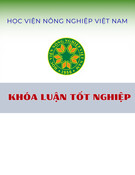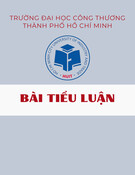
REVIEW Open Access
HPV vaccine: an overview of immune response,
clinical protection, and new approaches for
the future
Luciano Mariani
1
, Aldo Venuti
2*
Abstract
Although long-term protection is a key-point in evaluating HPV-vaccine over time, there is currently inadequate
information on the duration of HPV vaccine-induced immunity and on the mechanisms related to the activation of
immune-memory. Longer-term surveillance in a vaccinated population is needed to identify waning immunity,
evaluating any requirements for booster immunizations to assess vaccine efficacy against HPV-diseases. Current
prophylactic vaccines have the primary end-points to protect against HPV-16 and 18, the genotypes more
associated to cervical cancer worldwide. Nevertheless, data from many countries demonstrate the presence, at
significant levels, of HPVs that are not included in the currently available vaccine preparations, indicating that these
vaccines could be less effective in a particular area of the world. The development of vaccines covering a larger
number of HPVs presents the most complex challenge for the future. Therefore, long term immunization and
cross-protection of HPV vaccines will be discussed in light of new approaches for the future.
Introduction
Thenatureofantibodyresponses and duration, follow-
ing HPV vaccination, plays a key role in long-term pro-
tection against papillomavirus infection. The importance
of vigorous and prolonged immune protection over time
is related to the following issues:
1. the risk of HPV-infection remains as long as
women remain sexually active (at least 70-80% of
risk during their lifetime); the rate of prevalence and
incidence of high-risk HPV-infection is well docu-
mented in women over 26 yrs [1,2]. Furthermore, a
population-based cohort study in Costa Rica showed
that type-specific persistence increases with age [3].
All the above factors point-outthatsexuallyactive
womenover25arestillatriskofacquiringanew
HPV infection [4].
2. it is crucial to test the utility of HPV vaccination
programs as public health interventions;
3. it displays the maximum benefits of cervical can-
cer and other HPV-related cancers.
Nevertheless, it should also be highlighted that long-
term protection is not fully predictable at the introduc-
tion of any vaccine, because it varies according to many
variables (cohort target, coverage, acceptance, catch-
up...), that are not strictly related to immune response
only. Although some authors have developed a model to
predict long-term immunity, it still remains an ongoing
and challenging issue, as well as other human vaccines:
such as hepatitis B, meningococcal C or pneumococcal
polysaccharide vaccines [5,6].
To better analyze this problem three main aspects will
be valued: natural stability of HPV over time, immune
response after natural HPV infection and after vaccine.
Finally, HPVs are a family of many different genotypes
and ideally, an ideal vaccine should cover at least the
majority of those linked to tumor development, the so
called “high risk”types. Data from different Asian areas
have pointed out that a significant number of pre- and
neoplastic cervical lesions are linked to types 52 and 58
for example, which are rarely detected in Western coun-
tries. Thus, the possibility to develop second generation
cross-reacting vaccines covering a larger number of
HPVs will also be discussed.
* Correspondence: venuti@ifo.it
2
Lab. Virology, National Cancer Institute Regina Elena of Rome, Italy
Full list of author information is available at the end of the article
Mariani and Venuti Journal of Translational Medicine 2010, 8:105
http://www.translational-medicine.com/content/8/1/105
© 2010 Mariani and Venuti; licensee BioMed Central Ltd. This is an Open Access article distributed under the terms of the Creative
Commons Attribution License (http://creativecommons.org/licenses/by/2.0), which permits unrestricted use, distribution, and
reproduction in any medium, provided the original work is properly cited.

1-Natural Stability of HPV
HPV genotype variation over time in cervical cancer is a
crucial factor in estimating the long-term impact of vac-
cines. Indeed, papillomaviruses are an ideal model sys-
tem for studying the DNA virus evolution. From our
understanding of phylogenetic studies, the root of the
evolution of HPV types should point to Africa, since
humans evolved from nonhuman primates in this conti-
nent and where the separation of the a-, b- and g-PVs
must have predated the origins of primates [7]. In addi-
tion, the phylogeny of HPV variants (3 lineages:
European, Asian American and African) reflects the
migration patterns of Homo sapiens.AlthoughXietal.
provided evidence that the evolutionary process
stemmed from greater adaptability of certain intratype
HPV variants to specific human population groups,
HPVs have remained stable viruses over time, with
unexpected major variations [8]. HPVs do not change
host species and do not reorganize themselves. They
have maintained their basic genomic organization for a
period exceeding the 100 million year period. Further-
more, the spectrum of diseases associated with HPV
infections [anogenital cancer and warty lesions], have
accompanied humans throughout evolution.
Therefore, differently from the quasi-species of many
RNA viruses, HPV types have evolved very slowly, and have
diverged since the origin of humanity only by about 2% [9].
Over the next few decades the efficacy of a papilloma-
virus vaccine is fundamentally predictable. Nevertheless,
the large number of different genotypes among the HPV
viruses questions the number of HPV viruses that must
be included in the vaccine preparation process.
2-Natural Immune response to HPV Infection
In biological evolution, HPVs are successful infectious
agents. They induce persistent infections without fre-
quent and serious complications for the host and shed
virions for transmission to other naive individuals. They
reach a balanced state where the host usually is not ser-
iously disadvantaged by the HPV infection, and the virus
is not too limited in reproducing by the host’simmune
response [10]. To achieve this lifestyle and to maintain a
state of equilibrium, the HPV must avoid the host’s
defense systems. Many factors contribute to evading
immune pools, in particular:
1. no viral-induced cytolysis or necrosis;
2. no inflammation;
3. little or no release into the local milieu of proin-
flammatory cytokines;
4. no blood-borne or viremic phase;
5. only minimal amounts of replicating virus exposed
to immune defenses;
6. infection is exclusively intraepithelial;
7. virus capsid entry is usually an activating signal
for DCs, but there is evidence that LCs are not acti-
vated by the uptake of HPV capsids;
8. free virus particles are shed from the surface of
squamous epithelia with poor access to vascular and
lymphatic channels and to lymph nodes where
immune responses are initiated;
9. most DNA viruses have mechanisms for inhibiting
interferon synthesis and receptor signaling, and
papillomaviruses are no exception.
In fact, as quoted by Mark H Einstein “...these escape
mechanisms have enabled HPV to become one of the
most common sexually transmitted infections world-
wide”[11].
Despite HPV’s ability to evade the host’s immune sys-
tem and to down-regulate innate immunity, a primary
HPV-infection is cleared naturally in approximately 90%
of cases, thus indicating the central role of immunity in
the resolution of cervical and anogenital HPV-associated
diseases. Conversely, clearance of papillomavirus infec-
tion is significantly impaired in women with HIV/AIDS
or in immunosuppressed renal transplant patients, thus
focusing on the importance of cell-mediated immune
responses to HPV infection [12,13]. Without a doubt
CD4+ T-helper cells are almost certainly crucial in
avoiding persistent HPV infection, as well as inducing
wart regression [14,15].
The host’s immune response to HPV infection
(humoral immunity, mainly IgG) is usually slow, weak
and varied considerably among women. Generally, close
to half of the individuals seroconverted to L1 protein of
HPV-16, -18, or -6 within 18 months [16]. Conversely,
it means that more than 40% of women do not serocon-
vert or wane over time from the immune response and
therefore, indicates that the HPV L1 capsid-specific anti-
body is not a suitable diagnostic test for HPV infection.
Other HPV antigens [E1, E2, E6, and L2] do not evoke
any antibody responses in patients with acute or persis-
tent HPV infection.
Innate immunity acts as the first line of nonspecific
defense against any pathogen (dendritic cells, interferon-
a, cytokines, neutrophils, and macrophages) and attacks
by HPV should be detected by the intraepithelial dendri-
tic cell (DC). There is evidence indicating that DCs are
not activated by the uptake of HPV capsids suggesting a
limited role in the host’s response to HPV infection
[17,18].
Mariani and Venuti Journal of Translational Medicine 2010, 8:105
http://www.translational-medicine.com/content/8/1/105
Page 2 of 8

In regards to the differences versus post-vaccination
immunity, it should stress two main critical points. The
first is the possible immunodominant nature of the
immune response after natural infection. Most antigens
are structurally complex, containing many different epi-
topes or antigenic determinants. The L1 capsid protein
contains multiple overlapping epitopes, some of which
may be immunodominant. The immune system
responds to the antigen by producing a higher rate of
neutralizing antibodies to the most accessible epitopes
or to the immunodominant types. However, in natural
HPV infection the immune response is weak and type-
specific. Conversely, after administrating the HPV vac-
cine a strong and, although partially, cross-reactive
immune-response was detected.
The second critical point is in regards to the long-
term clinical significance of immunity evoked by natural
infection. Some clinical studies suggest that natural
infection-elicited antibodies may not provide complete
protection to HPV over time. However, they could not
distinguish the new infection from the reactivated latent
ones. Recurring HPV type specific natural infections
occur equally in women after 5-7 years of follow-up,
regardlessofthetypespecificserostatus[19].Similar
indications emerge from the quadrivalent vaccination
trial. It has been established in the FUTURE studies that
some women in the placebo-group developed the dis-
ease despite having antibodies to the offending HPV
types at enrollment, thus confirming, as stated in the
recent WHO position-paper, that host antibodies,
mostly directed against the viral L1 protein, “...do not
necessarily protect against subsequent infection by the
same HPV genotype”[20,21].
3-Immune response to HPV Vaccine
The most effective HPV vaccine was developed as a
result of the achievement of core technologies able to
produce virus-like particles (VLPs). The recombinant
DNA was used to generate VLPs capable of mimicking
the natural virus and eliciting high-titers of virus neutra-
lizing antibodies. The L1 gene from the viral genome
was sub-cloned in microorganisms, such as yeast (for
quadrivalent vaccine) or baculovirus (for bivalent vac-
cine). In this way L1 over-expressed proteins sponta-
neously self-assemble into VLPs that:
1. resemble the conformation of authentic virions;
2. are neither infectious, nor oncogenic;
3. induce high levels of type specific neutralizing
antibodies.
The main question about the HPV vaccine is:
why, when the body’s natural antibodies respond so
poorly, do HPV-vaccines that generate serum neutralizing
antibodies work?
Theansweristhatthequalityandthequantityofthe
immune response generated by the vaccine is different
to those of the natural infection.
Themaincharacteristicsoftheimmuneresponsefol-
lowing VLPs are:
1. VLPs are highly immunogenic [two log over the
natural infection], inducing high concentrations of
neutralizing Ab to L1, also in the absence of adju-
vant ones [due to their ability to activate both innate
and adaptive immune responses] and they also
remain high over time;
2. VLPs generate a heterogeneous or polyclonal
immune response: immunodominant and non-
immunodominat; neutralizing and non-neutralizing;
type-specific and partially cross-reactive type
responses.
3. The antigen dose in VLPs is much higher than in
natural infection and the capsids are directly exposed
to systemic immune responses.
A rapid, potent, and sustained immunologic response
to the administration of a quadrivalent vaccine (target-
ing HPV 6, 11, 16, and 18) and after a bivalent vaccine
(targeting HPV 16 and 18) has been reported so far
[22,23]. Antibody titres (expressed as geometric mean
titres -GMTs- of serum IgG) reach their peak after the
third dose, then decline gradually, but remain higher than
those naturally infected. Such high immune-responses
mean high clinical protection [in the short-term evaluation
of both trials], close to 100% in HPV-naïve women against
CIN2+ or AIS [24-26].
Another question that we are faced with is: does the
intensity of such a humoral immune response corre-
late with long-term protection? Although a direct cor-
relation between antibody levels and protection may
seem intuitively obvious, it is still unclear whether dif-
fering antibody titers indicate better disease protection
or longer duration of immune protection [27].
Given that virtually all vaccinated women are serocon-
verted, we may deduce that up-to-now, we do not have
any immunological correlates for protection as already
stated in the last WHO position paper and therefore,
the question still remains unanswered [21].
It was estimated that near life-long persistence of anti-
HPV-16 and 18, following bivalent vaccination, is
expected at titer levels above those associated with
reduction of natural HPV-16 infection in 76% of these
subjects, and above detectable levels in 99% of these
Mariani and Venuti Journal of Translational Medicine 2010, 8:105
http://www.translational-medicine.com/content/8/1/105
Page 3 of 8

subjects[6,28]. However,eveninwomenwherepost-
vaccineantibody levels drop to natural infection levels
[such a humoral response against L1 HPV-18 in the
quadrivalent RCT], there is no evidence to date of a vac-
cine breakthrough [29]. Indeed, in other infectious dis-
eases [such as human hepatitis A and B] the persistence
of immunity in individuals with decreasing antibody
levels after vaccination has been demonstrated [30]. In
addition, animal models show that low levels of anti-L1
antibodies provide long-term protection against high
doses of the challenging virus [31]. As quoted by Mar-
garet Stanley, published data on overall RCTs extend
only to 5.5 years post immunization, therefore, the ques-
tion of disease protection in the absence of detectable
antibodies still remains [32]. However, recent data indi-
cated that efficacy, immunogenicity, and safety of the
bivalent AS04-adjuvanted vaccine is up to 6.4 years [33].
This period is the longest reported for any HPV vaccine
suggesting that boosters are not needed later on,
decreasing considerably the complexity and costs of the
delivery programme, particularly in developing countries
[34]. Nevertheless, as this is still a serious issue, the
same bivalent vaccine HPV007 Study Group is carrying
out a separate follow-up study continuing up to 9.5
years after vaccination in a subset of women from the
previous study.
After having dealt with the latter issue, we must try
and address the following question:
Does the vaccine activate the immune-memory system?
In other words, is it stated that vaccines will induce a
generation of long-life memory immune cells that, after
re-exposure to the relevant antigen, generate a potent
immune response preventing HPV infection?
The mechanisms of long-term immune-protection by
means of memory B-cells have been, once again, eluci-
dated for the hepatitis B virus vaccine, whose evoked-
immunity appears similar to that of the HPV vaccination
[35]. Certainly, memory B cells play an important role in
effective immunization and in the memory-mechanism
that produces antibodies in response to further antigenic
challenges [36]. Indeed, circulating B memory cells can
be detected soon after HPV bivalent vaccination [37].
Furthermore, the study of Einstein et al, comparing the
immune response and reactogenicity of the two vaccines
with the same methodology [PBNA, pseudovirion-based
neutralization assay] stated that for any age strata positiv-
ity rates for anti-HPV-16 and -18 neutralizing antibodies
in cervicovaginal secretions and circulating HPV-16 and
-18 specific memory B-cell frequencies were higher after
vaccination with the bivalent vaccine compared with the
quadrivalent vaccine [38].
WHO explicitly stated that the induction of the
immune memory “should be assessed by means of
evaluating immune responses to additional doses of
vaccine administered at planned intervals following com-
pletion of the primary series”[39]. Subsequently, the
immune-memory anamnestic response with an antigen
challenge has been reported for the quadrivalent vaccine
[40]. Nevertheless, the question in vaccinated women is:
does natural re-exposure to the same HPV type-vaccine
significantly boost antibody levels, which contribute to
the long-term persistence of anti-HPV responses and,
consequently, does it improve protection over the next
few decades? Time is needed to suitably answer this
question.
4-Second Generation of Cross-Reacting Vaccines
The current vaccines are able to elicit an immunological
response against the two most common oncogenic types
found in cervical cancer, HPV-16 and HPV-18, but not
against all high-risk mucosal HPVs. Data from many
countries demonstrate the presence, at significant levels,
of HPVs that are not included in the currently available
vaccine preparations indicating that these vaccines could
be less effective in certain areas of the world [41-43]. It
is obvious that a multivalent vaccine against a multitude
of HPVs will have a major impact on public health, and
efforts to develop a nine-type L1 VLP combination vac-
cine are ongoing. Undeniably, VLP vaccines are highly
effective against the virus types from which the L1 origi-
nates from, but their efficacy against other HPV types is
variable, depending, in part, upon their phylogenetic
similarity [44].
Preventing infection and disease associated with addi-
tional oncogenic genotypes, immunologically related to
HPV 16 and 18 (particularly HPV 31 and 45), may pro-
vide an extra measure of protection. A statistically sig-
nificant protective effect against virological and clinical
end-points regarding HPV 31 (persistent infection and
CIN2-3/AIS related diseases) has been reported after
administrating the quadrivalent vaccine in the naïve [45]
and ITT populations [46].
Also, after administrating the bivalent vaccine, a cross-
protection against incident infection (with a 66 months
of follow-up), persistent infection and CIN2+ related to
HPV 31 and HPV-45 has been reported[47,26].
L2 vaccines
Many reports suggested that immunization against the
minor capsid protein 2 might work as a pan-HPV vac-
cine against different genotypes of papillomaviruses in
addition to those causing genital warts and/or cervical
and other mucosal cancers. Preclinical studies have
demonstrated that cow or rabbit immunizations with L2
polypeptides protect against the homologous animal
papillomavirus at mucosal sites in the bovine papilloma-
virus (BPV) type 4/cattle model and at cutaneous sites
Mariani and Venuti Journal of Translational Medicine 2010, 8:105
http://www.translational-medicine.com/content/8/1/105
Page 4 of 8

in the cottontail rabbit papillomavirus (CRPV)/rabbit
model [48-53]. In addition to homologous protection,
inoculation of amino-terminal L2 polypeptides also
induced protection against heterologous papillomavirus
types. Indeed, vaccination with HPV-16 L2 (amino acids
11-200) protects against CRPV and rabbit oral papillo-
mavirus, both evolutionarily divergent from HPV-16
[54]. Vaccination with BPV-1 L2 (amino acids 1-88)
peptides produced sera with cross-neutralizing activity
against different HPVs [55]. Protection induced by
homologous and heterologous L2 polypeptides, appears
to be mediated by neutralizing antibodies. Human
volunteers vaccinated with the candidate prophylactic/
therapeutic vaccine HPV-16 L2E6E7, fusion protein pro-
duced L2-specific antibodies, neutralized a divergent
type of HPV [39 ,56].
Thus, the efficacy of L2 vaccination has been proved
in pre-clinical and clinical studies but, since natural
infection does not induce anti-L2 antibodies [37] and
many L2 epitopes are not on the virus surface [57], how
can the antibodies against the L2 N-terminal region
neutralize the virus?
A possible explanation is that during the infection cel-
lular protease furin removes an L2 N-terminal sequence
rendering L2 accessible on the capsid surface and dis-
playing the L2-neutralizing epitopes. Thus, the binding
of the anti-L2 antibodies to the exposed L2 epitope[s]
blocks virus transfer from the extracellular matrix to the
cell surface and hence prevents infection [58,59].
However, the monovalent L2 immunogens generate
neutralizing titers that are greater for the homologous-
type virus than for a heterologous-type papillomavirus.
The lower immune response to heterologous HPVs
could severely limit the breadth and duration of protec-
tion of an L2-based vaccine. To address this issue and
provide broader immunity, the L2-neutralizing epitope
was inserted on the surfaces of VLPs increasing the
titers of neutralizing antibodies approximately 10-fold
[60]. A synthetic L2 lipopeptide, in which the cross-neu-
tralizing L2 peptide is linked to both a T-helper epitope
and a ligand for Toll Like Receptor 2 [TLR2]. tandem
repeats of the same peptide displayed on bacterial thior-
edoxin, or concatenated multitype L2 fusion proteins
from different papillomavirus types have already been
utilized in inducing cross-neutralizing antibodies against
several clinically relevant HPV types[61-63]. In particu-
lar, the concatenation of L2 of diverse types results in
the repetitive display of B-cell epitopes that enhances
antibody production. Indeed, this polymeric L2
approach gives rise to antisera, that neutralize at higher
titers, not only the types included in the multimeric
immunogen but also other types.
Low cost vaccines
While the concanated L2 epitope appears to be a pro-
mising solution, the VLP/L2 production does not solve
the problem of the expensive production of VLPs.
Clearly, another drawback in the existing vaccines is
that the production of VLPs occurs in eukaryotic cells
with high production costs. A cheaper alternative to
VLPs is the production of L1 pentamers in bacteria live
L1-recombinant salmonella enterica serovar typhimur-
ium or typhi that can be stored lyophilized, although
multivalent formulations would still be required for
broad protection [64-66]. Furthermore, the present vac-
cine distribution requires a cold chain. This last problem
together with high production costs render the wide use
of HPV vaccines in near by developing countries almost
impossible, where it is most needed because of the lack
of cytologic screening programs.
Local production in emerging economies can be the
solution, particularly if carried out with the development
of very low cost technologies, such as plant-production
of the VLP or L2 vaccines [67,68]. A number of studies
demonstrated that VLPs from HPVs can also be pro-
duced in a variety of plant species including tobacco,
potatoes and tomatoes [69-71]. The major drawback in
the first few studies was the low production of antigens
per gram of the total soluble proteins [TSP]. Recently,
by using transient expression technologies, the plant-
production of L1 antigens reached 24% [3 g/kg] of the
TSP, rendering this preparation useful for industrial
scale-up [72]. Finally, VLP preparation can be produced
in tomatoes, providing the possibility to deliver inexpen-
sive heat-stable oral vaccines, formulated on site as sus-
pensions to be drunk under supervision [73]. However,
the L1 VLPs to date have demonstrated relatively poor
immunogenicity when taken orally.
Conclusion
L1 VLP vaccines are very effective in preventing new
infections by the two most common oncogenic HPV
types and will dramatically reduce the rates of HPV-
associated cancer provided that the vaccine is widely
and properly delivered. To reach these conditions more
studies are needed in order to find new broad-spectrum
vaccines, possibly more economically produced. Further-
more, the above mentioned clinical benefits on the
population will emerge only when harmonizing the pre-
vention strategies [primary and secondary] and assuring
over time clear and complete information to the com-
munity will take place [74]. In addition, the future aim
in eradicating HPV-associated pathologies worldwide
will be by locally producing antigens with cross-activity
among the different types of HPVs.
Mariani and Venuti Journal of Translational Medicine 2010, 8:105
http://www.translational-medicine.com/content/8/1/105
Page 5 of 8

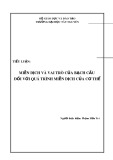


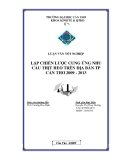
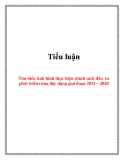
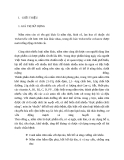
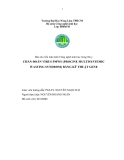
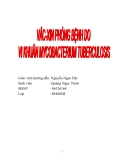
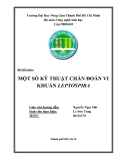
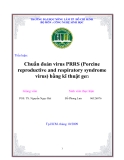

![Bệnh Leptospirosis: Khóa luận tốt nghiệp [Nghiên cứu mới nhất]](https://cdn.tailieu.vn/images/document/thumbnail/2025/20250827/fansubet/135x160/63991756280412.jpg)


